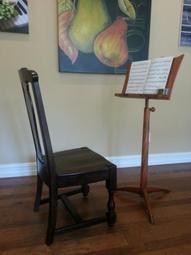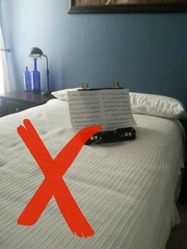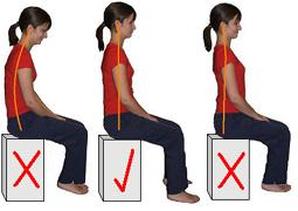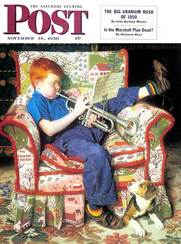What should a practice space look like?
In a distraction free environment (no TV or background music playing).
In a well lit room to prevent eye strain.
If there is a ceiling fan in the room, turn it off as it can sometimes spin the air and distort tone quality when it is on.
Your student should sit on a sturdy chair, such as a dining chair. This is for optimal posture to allow good breathing and air support in the music, as well as preventing physical discomfort while holding the instrument. Arm chairs are not ideal, and couches and beds should be completely avoided.
In a well lit room to prevent eye strain.
If there is a ceiling fan in the room, turn it off as it can sometimes spin the air and distort tone quality when it is on.
Your student should sit on a sturdy chair, such as a dining chair. This is for optimal posture to allow good breathing and air support in the music, as well as preventing physical discomfort while holding the instrument. Arm chairs are not ideal, and couches and beds should be completely avoided.
A music stand should always be used and set to a height where the student is looking straight ahead and never down. This will encourage healthy posture habits.
Posture: Students should be sitting or standing up tall without a curve or slouch in their backs, and their backs away from the back of the chair. Chins should be slightly elevated, not pointed down or in towards their neck. Elbows should be slightly away from the body and relaxed. When sitting, feet and legs should make a 90 degree right angle with feet flat on the floor and not tucked under the legs or chair.
Posture: Students should be sitting or standing up tall without a curve or slouch in their backs, and their backs away from the back of the chair. Chins should be slightly elevated, not pointed down or in towards their neck. Elbows should be slightly away from the body and relaxed. When sitting, feet and legs should make a 90 degree right angle with feet flat on the floor and not tucked under the legs or chair.




